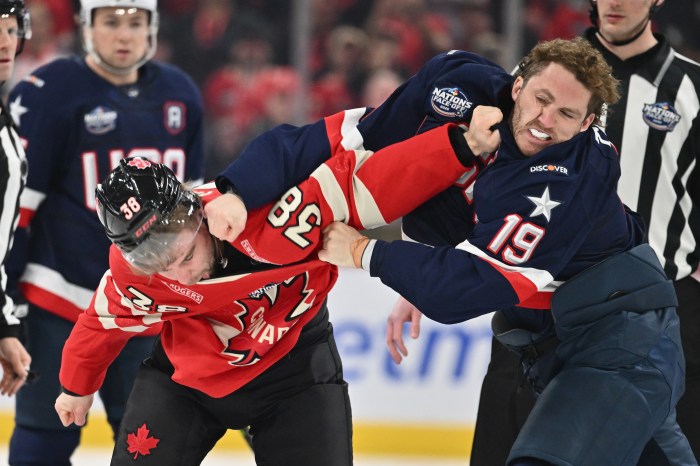Aaron Rodgers was the chosen one to change everything for the New York Jets. This, for once in the downtrodden franchise’s existence, was supposed to be different.
It felt different. For months talking heads and national pundits alike were debating whether or not the Jets were legitimate Super Bowl contenders instead of making them the butt of their jokes after acquiring the future Hall-of-Fame gunslinger from the Green Bay Packers.
They were calling MetLife Stadium, their shared home with the historically more successful big brother Giants, “JetLife Stadium”.
Green was in as No. 8 Rodgers jerseys popped up all over the country as the most-sold uniform. Jets ticket prices soared more than 400%. They had the seventh-best odds to win the Super Bowl.
And finally, after months of pontificating and raising hopes and seemingly changing the direction of a franchise mired in dysfunction for the better part of the last five decades, there he was running out of the tunnel with a singular spotlight on him carrying an American flag on the 22nd anniversary of Sept. 11 — what was supposed to be a long-awaited turning point for the team.
At 8:15 p.m. ET, a Super Bowl-hopeful season kicked off. Seventeen minutes later, it evaporated.
Four snaps into his Jets career, Rodgers was sitting on the turf grabbing at his left leg. He was carted to the locker room and didn’t return. On Tuesday morning, an MRI confirmed that his season was over due to a torn Achilles.
Hang this on the ransacked mantle of other Jets hopes and dreams that, almost predictably, didn’t work out. Actually, hang this one above almost all of them — and there are a lot of them.
After losing the AFC Championship Game in 1998 to the Denver Broncos, quarterback Vinny Testaverde went down with a season-ending Achilles injury in Week 1 of the 1999 season.
Sound familiar?
They went 8-8.
Falling short of the AFC Championship Game by a field goal six years later in 2004, the Jets lost both of their quarterbacks, Chad Pennington and Jay Fiedler, for the season within minutes of each other the next season during a Week 3 game against the Jacksonville Jaguars.
They went 4-12 in 2005.
In 2008, the former Packers quarterback and future Hall of Famer (again, sound familiar?) Brett Favre led the Jets to a 9-3 record, making them appear as a lock for the playoffs. But he suffered a torn bicep, tried to tough it out, and would go on to throw just two touchdowns, and nine interceptions in the last five games of the season as the Jets went 1-4 and missed the postseason.
There was Richard Todd choking away the 1983 AFC Championship Game by throwing five interceptions and forcing the Jets to look for a quarterback at the ensuing draft. They took Ken O’Brien instead of Dan Marino.
At the 1995 Draft, as future Hall-of-Fame defensive tackle Warren Sapp appeared to fall into the Jets’ laps, they drafted Kyle Brady.
Bill Belichick became their head coach for a day after the 1999 season, but quickly turned heel and fled for the New England Patriots where he became a Hall of Fame head coach. The Jets ushered in the era of his ticket to Canton, too, injuring Drew Bledsoe in a 2001 game that forced Belichick to call on an unheralded seventh-round pick out of Michigan, Tom Brady. He proceeded to terrorize the Jets for the next two decades.
Maybe it’s recency bias, but Rodgers’ injury somehow feels worse than all of this. After 12 playoff-less seasons, and countless whiffs on quarterbacks ranging from Mark Sanchez to Geno Smith, to Sam Darnold, there was finally stability under center to lay the foundation of a team that is still waiting for a first Super Bowl championship in what will be 55 years by this February.
There was finally a light at the end of the tunnel.
The Jets’ defense will do its best to keep a spark in 2023, but it all just feels so unlucky.
For more on the Jets and Aaron Rodgers, visit AMNY.com
Read more: Jets’ O-Line Progress: Becton Shines in Preseason



































